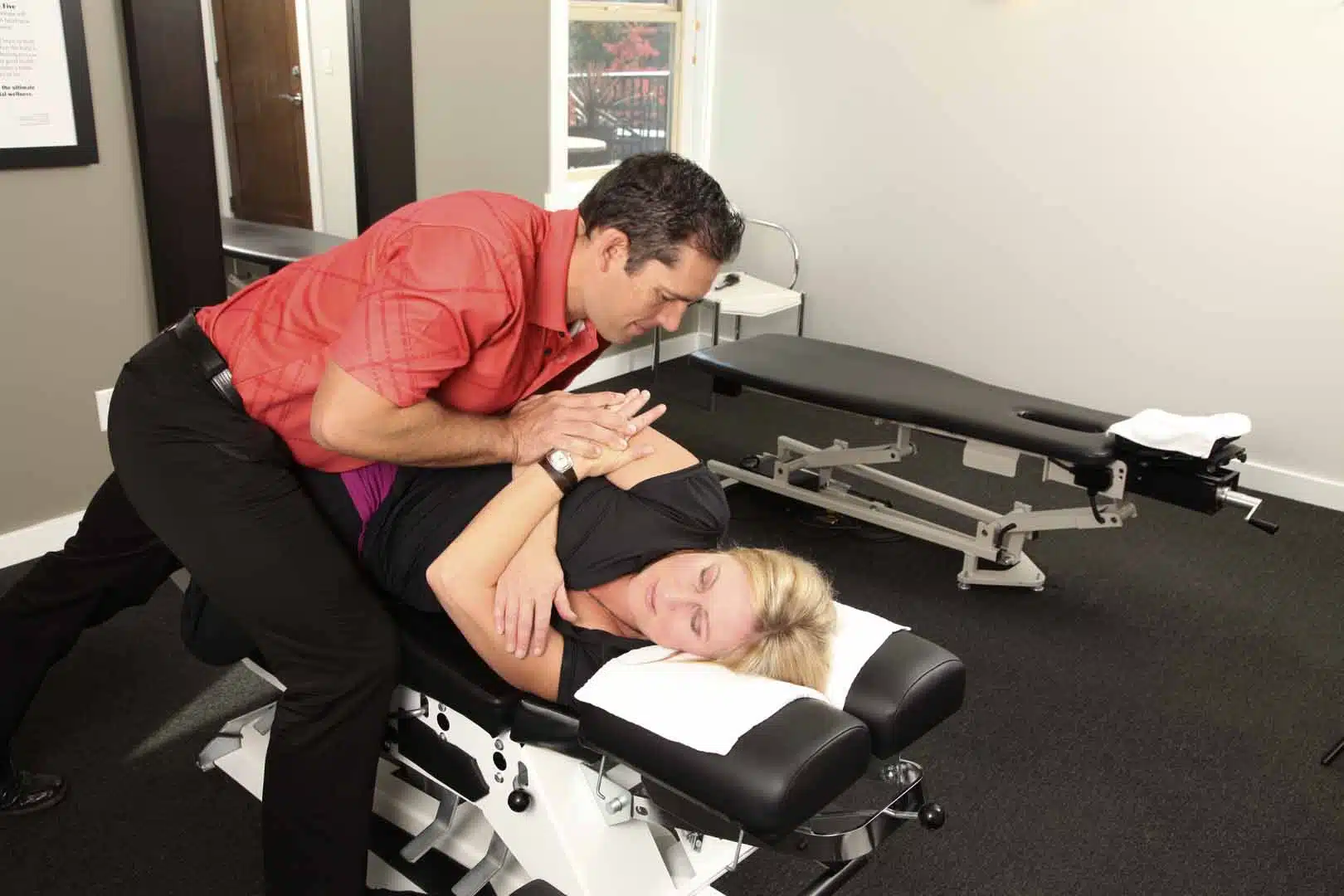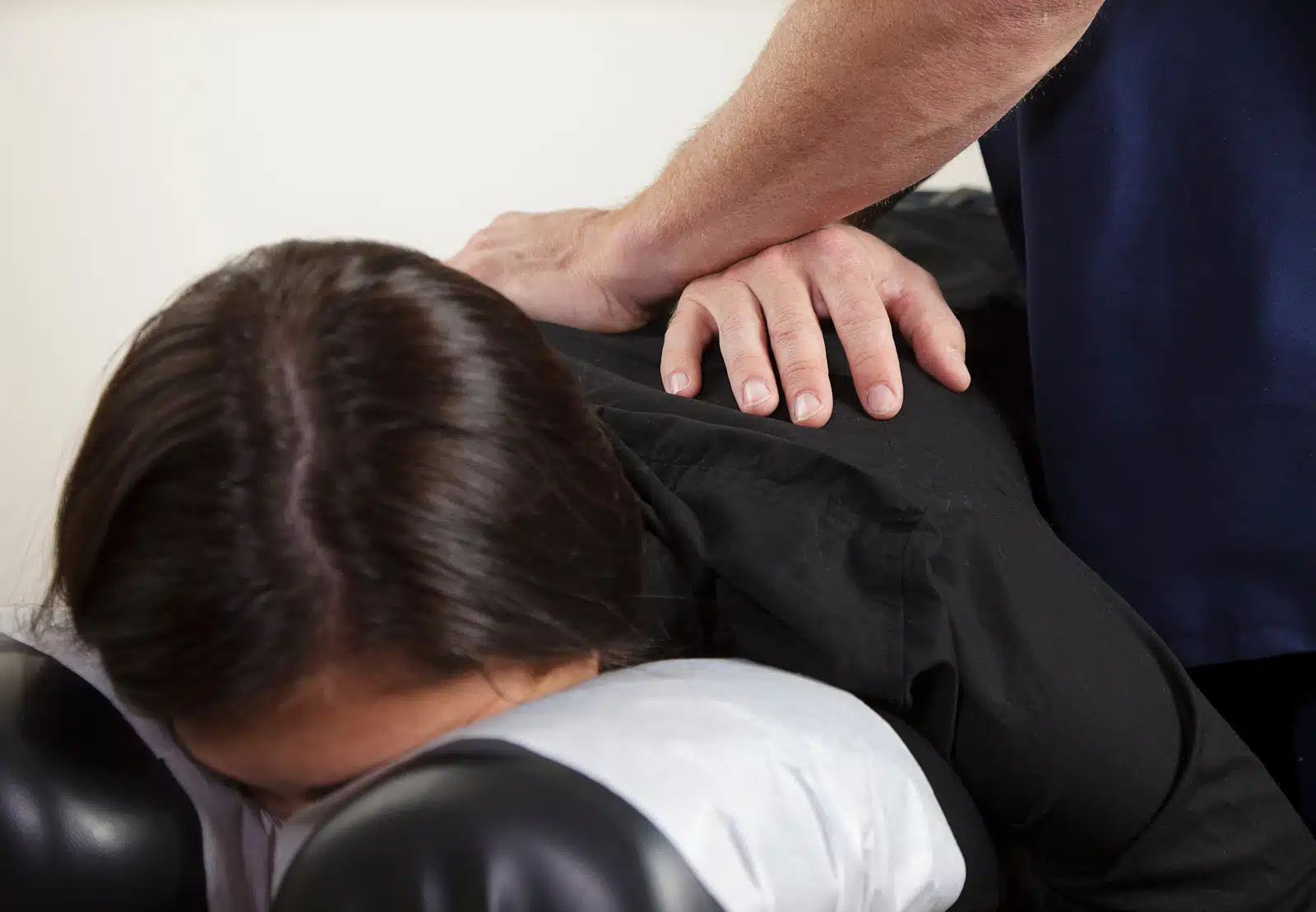Wonder what happens in a chiropractic adjustment? If it’s your first appointment, hearing unfamiliar terms like “activator” or “diversified” might leave you feeling a bit confused and overwhelmed. If you’re considering this treatment option, understanding the different types of chiropractic adjustments can make your experience much more comfortable and effective.
From gentle, instrument-assisted techniques to manual adjustments, this blog will introduce seven common chiropractic adjustment methods, outlining their specific benefits and the conditions they address so you can walk into your appointment feeling confident and informed.

Chiropractic adjustments are precise techniques that help restore spinal alignment, relieve pain, and support natural healing. During a chiropractic appointment, the chiropractor uses either their hands or a small instrument designed to apply controlled force to a patient’s affected areas (usually the spinal joints), enhancing motion and the body’s overall physical function.
The top benefits of chiropractic adjustments include the following:
Chiropractic adjustments take a targeted approach to musculoskeletal health, perfect for addressing various conditions, from back pain and neck stiffness to headaches and sciatica.
Chiropractic techniques for pain relief encompass a variety of adjustments, each designed to address specific needs. Here are seven common types.

The Diversified Technique is the most frequently used chiropractic adjustment. It involves a series of specific maneuvers that realign the spine and alleviate joint pain. This technique delivers a quick, forceful thrust to the affected joints, often resulting in a popping sound due to the gas released between the joints. Chiropractors may use their hands, a table, or blocks to assist with the adjustments.
The Gonstead technique aims to align the spine and alleviate pain. A chiropractor might use diagnostic tools like a nervoscope to pinpoint inflamed areas needing adjustment, then apply manual, high-velocity, low-amplitude thrusts to enhance the patient’s posture and mobility.
The Activator chiropractic technique offers a precise and gentle solution for those with sensitive conditions or limited mobility. A handheld device delivers quick, controlled impulses to correct spinal misalignments without the need for tensing up, twisting, or turning. In a 2012 JCCA systematic review, this technique has been shown to significantly reduce pain in conditions like low back pain, neck pain, TMJ disorders, and muscle trigger points.
The Drop Table Technique, also known as the Thompson Technique, uses a specific table for a smoother and more comfortable process. The chiropractor applies quick pressure to the spine while, simultaneously, a section of the table drops. This synchronized action uses gravity and momentum to facilitate a gentler, more effective spinal adjustment. Practitioners must complete additional training to perform the Thompson drop table technique.
Rather than a direct thrust technique, the Flexion-Distraction Technique gently stretches the spine through a rhythmic, pumping motion. A segmented table moves as the chiropractor performs manual adjustments, aiming to decompress the spinal discs and open up the spaces between the vertebrae. This helps reduce pressure on nerves and improve spinal mobility, perfect for those suffering from herniated discs or sciatica.
MUA can break up scar tissue that has formed in muscles, joints, or around nerve roots due to injuries, surgeries, or chronic pain and inflammation. Under general anesthesia, the use of gentle movements improves joint mobility. Local anesthetics, ice, or other methods may also be used to reduce swelling. MUA is appropriate for patients with chronic pain and stiffness needing enhanced range of motion. This is typically performed in an outpatient setting and not provided by our office, here at Stumpff Chiropractic.
Extremity adjustments target joint pain and restricted movement in the limbs. These adjustments focus exclusively on peripheral joints, not the spine. A chiropractor uses various manual techniques, including stretching and gentle forces. They may also use handheld instruments for some processes, but the primary method is manual.
Now that you understand how different types of chiropractic treatments work, let’s explore the conditions they can address.

The distinctive sounds of a chiropractic adjustment—snaps, crackles, and pops—can seem daunting if you’ve never been to one. However, those noises are part of a sophisticated approach to spinal health, with different types of chiropractic adjustments designed for specific needs.
Chiropractic adjustments provide safe and effective relief for a range of conditions. They utilize both manual techniques and instrument-assisted methods to help patients reduce pain, improve function, and enhance their overall quality of life.
If you’re seeking compassionate, professional chiropractic care, choose Stumpff Chiropractic as your reliable choice. Dr. Eric Stumpff, our experienced provider in treating various musculoskeletal issues, has undergone training and certifications in chiropractic adjustments, ensuring top-notch care. We aim to provide the most modern and effective care for our patients using state-of-the-art equipment and personalized treatment plans.
Ready to find relief and improve your mobility? Contact Stumpff Chiropractic today!
